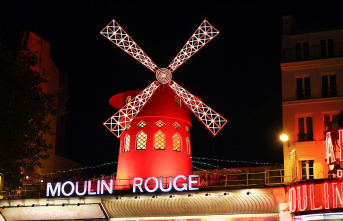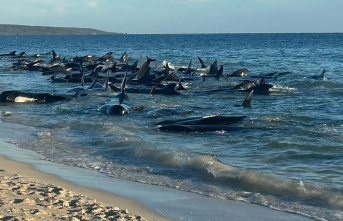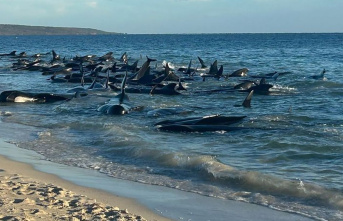After almost 26 days in space, a picture-perfect landing in the Pacific: the unmanned "Orion" capsule of NASA's "Artemis 1" moon mission is back on earth. A "historic" day, said Nasa boss Bill Nelson proudly. Because the test mission is considered an important step for the return of humans to the moon, with the long-term goal of a trip to Mars.
"We're one step closer to sending astronauts to the moon," congratulated US Vice President Kamala Harris on Twitter. The German astronaut Alexander Gerst also cheered: "A historic moment
Spectacular live images from the US space agency Nasa showed how the capsule, slowed down by parachutes, touched down in the sea. "Orion" landed on Sunday evening (CET) as scheduled in the Pacific off the coast of Mexico. "Water landing," NASA wrote on Twitter - and welcomed the spacecraft "home." "Orion" traveled 1.4 million miles through space, flew around the moon and collected important data.
Learn from future moon missions
It was a day steeped in history: exactly 50 years ago - on December 11, 1972 - "Apollo 17" landed on the moon as the last manned visit from Earth to date. Overall, the United States was the only country to date to land twelve astronauts on the moon with the "Apollo" missions between 1969 and 1972.
Now their goal is to learn from future moon missions to explore the cosmos, Nasa boss Nelson said on Sunday. At the end of the 2030s, they wanted to go to Mars with humans - "and then even further out". Unlike when the United States went it alone 50 years ago, this is now a "great day" for NASA's international partners, stressed Nelson. The European Space Agency Esa and space agencies from several other countries are involved in "Artemis".
Private companies are also setting course for the moon. On Sunday, a few hours before "Orion" returned, a rocket with a commercial Japanese lunar lander was launched towards the moon. If successful, it would be the world's first private moon mission. Elon Musk's SpaceX Falcon 9 rocket lifted off from Cape Canaveral in Florida. She brought the lander "Hakuto-R" of the Japanese company ispace on the way to the moon. The aim is to transport payloads to the lunar surface cost-effectively and at high frequency.
High costs, technical problems, storm
The "Artemis 1" mission was not initially under a good star after cost explosions and repeated launch postponements - due to technical problems or stormy weather. On November 16, "Orion" finally took off from Cape Canaveral with the "Space Launch System" rocket. All of the planned milestones were ticked off for almost four weeks: flyby the moon, swinging into the moon's orbit, swinging out of the moon's orbit, another flyby on the moon - and now the landing.
It was considered the last major challenge of the test mission: "Orion" flew into the earth's atmosphere at around 40,000 kilometers per hour and was then slowed down to around 480 kilometers per hour. The heat shield of "Orion" has to withstand temperatures of around 2800 degrees Celsius.
The European Service Module (ESM) was separated around 40 minutes before landing. At the end of the mission, nothing was left of this drive and supply unit, which supplied the crew module with electricity, water and air, among other things - it burned up in the earth's atmosphere as planned.
The return of the Orion capsule looked "like in a picture book", said Martin Tajmar, space systems expert at the TU Dresden, on Sunday evening of the German Press Agency. According to Tajmar, NASA tried some new techniques on landing.
This includes the so-called Skip Entry, which was used for the first time in a spaceship designed for humans. Roughly speaking, this procedure can be compared to jumping a stone over a body of water. "Orion" dipped into the earth's atmosphere to leave it again shortly after the impact. The capsule then dived again and then – slowed down by parachutes – watered down in the Pacific. This technique is intended to allow for a more precise landing.
Back to Florida by truck
Immediately after the water landing in the Pacific, the capsule was surrounded by helicopters and boats. With the help of specialists and divers, "Orion" is now to be brought to the port of San Diego. From California it then goes back to Florida by truck overland, Nasa said. It will take days and weeks to evaluate the collected data.
According to NASA's plans, the first manned flight ("Artemis 2") around the moon could take place in two years, followed by another flight with astronauts including a moon landing ("Artemis 3"). The "Artemis" program, named after the Greek goddess of the moon, envisages a woman and a non-white person on the moon for the first time.
On board "Orion" this time were two dolls from a project with German and Israeli participation - so-called astronaut phantoms. Zohar and Helga were to be tested to see whether a special protective vest could effectively protect a female body from dangerous space radiation.












